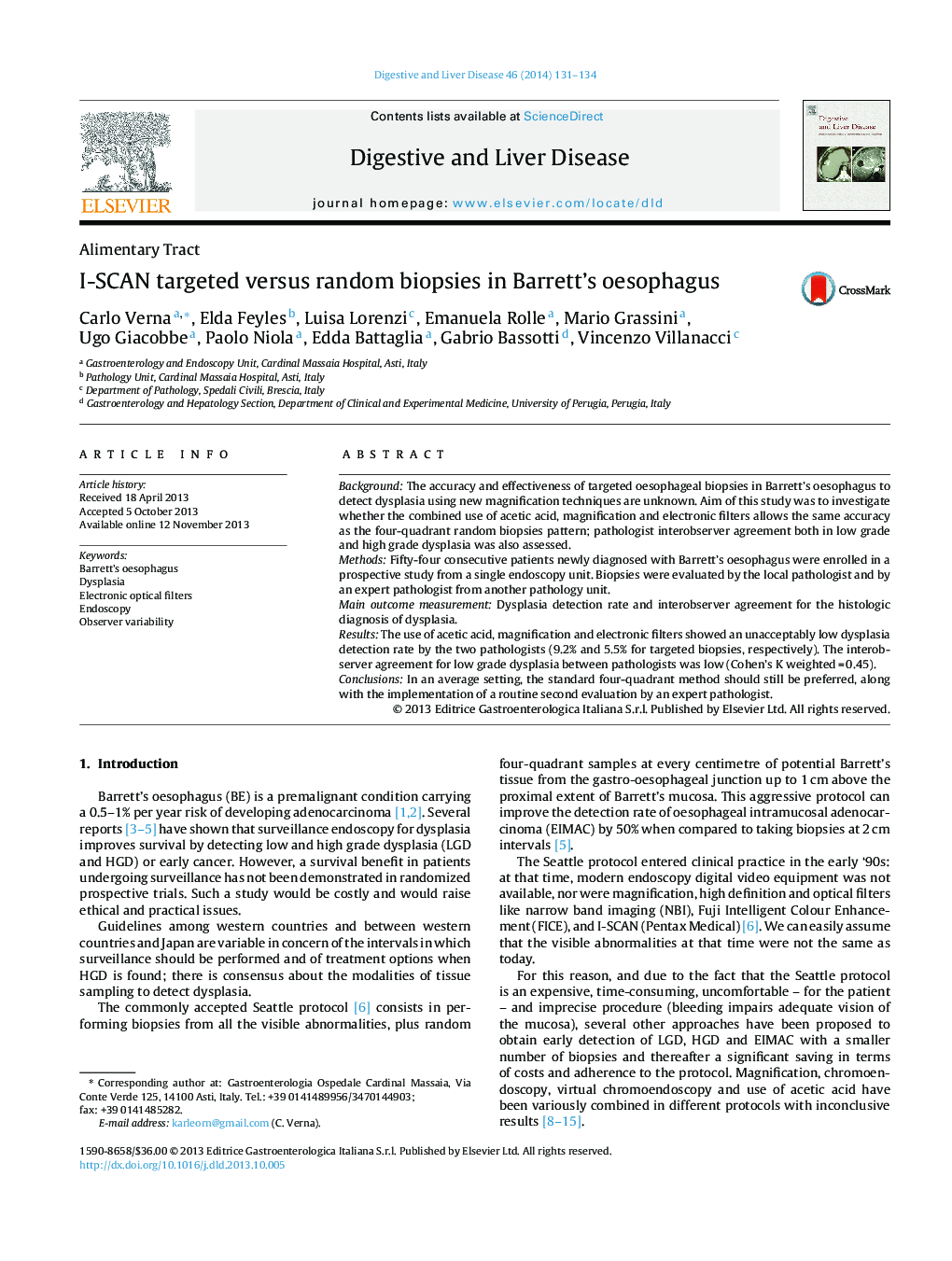| Article ID | Journal | Published Year | Pages | File Type |
|---|---|---|---|---|
| 6088790 | Digestive and Liver Disease | 2014 | 4 Pages |
BackgroundThe accuracy and effectiveness of targeted oesophageal biopsies in Barrett's oesophagus to detect dysplasia using new magnification techniques are unknown. Aim of this study was to investigate whether the combined use of acetic acid, magnification and electronic filters allows the same accuracy as the four-quadrant random biopsies pattern; pathologist interobserver agreement both in low grade and high grade dysplasia was also assessed.MethodsFifty-four consecutive patients newly diagnosed with Barrett's oesophagus were enrolled in a prospective study from a single endoscopy unit. Biopsies were evaluated by the local pathologist and by an expert pathologist from another pathology unit.Main outcome measurementDysplasia detection rate and interobserver agreement for the histologic diagnosis of dysplasia.ResultsThe use of acetic acid, magnification and electronic filters showed an unacceptably low dysplasia detection rate by the two pathologists (9.2% and 5.5% for targeted biopsies, respectively). The interobserver agreement for low grade dysplasia between pathologists was low (Cohen's K weighted = 0.45).ConclusionsIn an average setting, the standard four-quadrant method should still be preferred, along with the implementation of a routine second evaluation by an expert pathologist.
